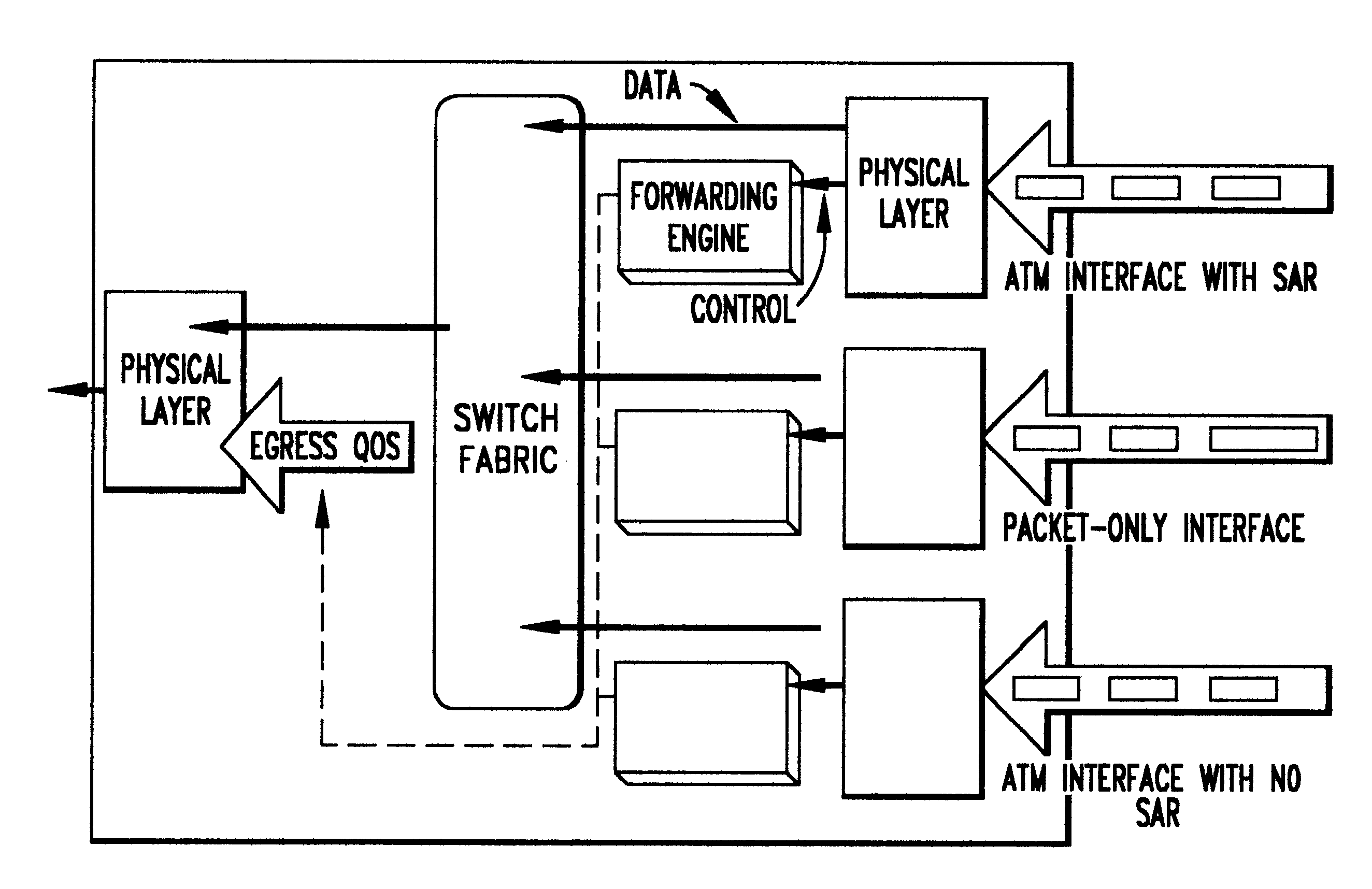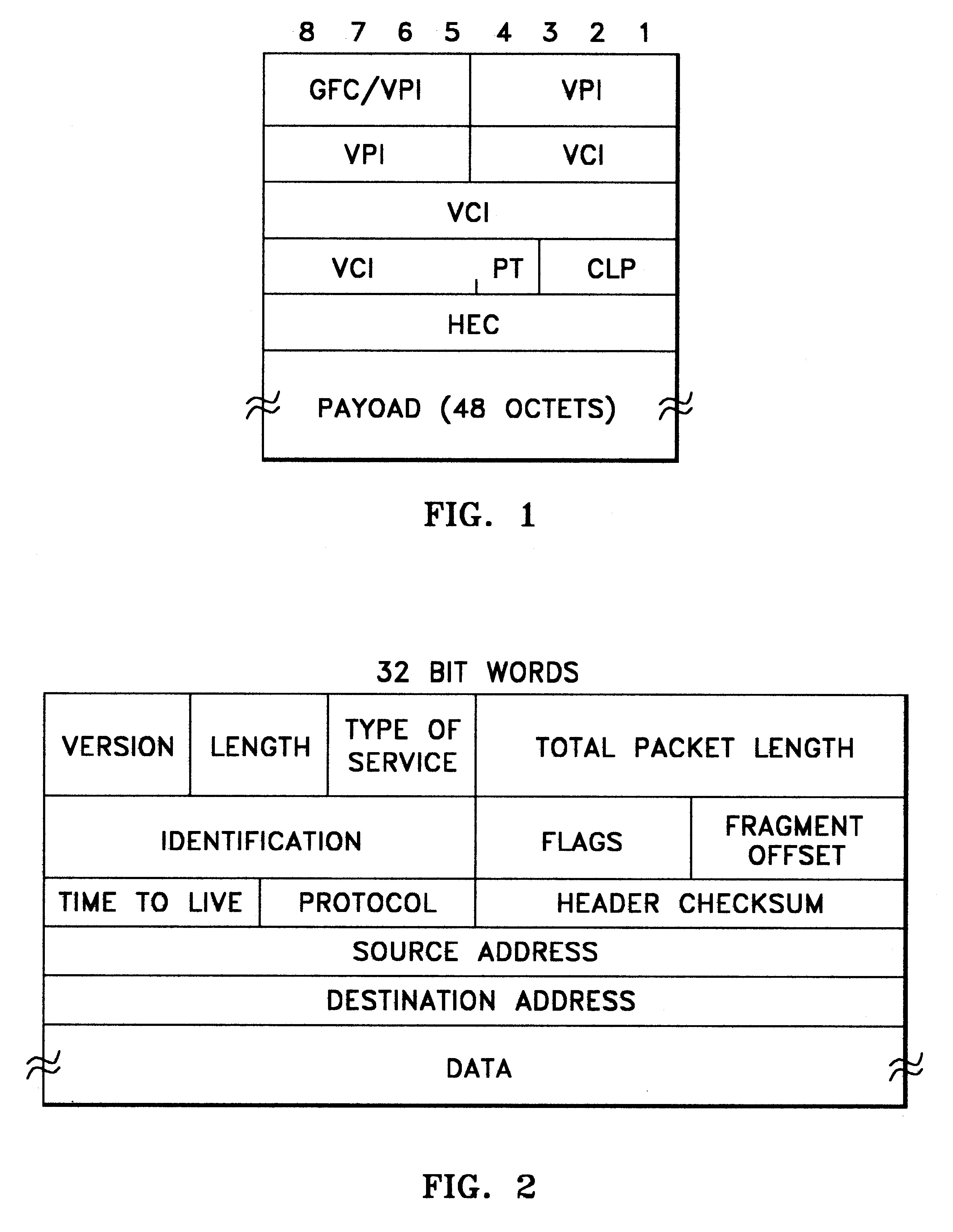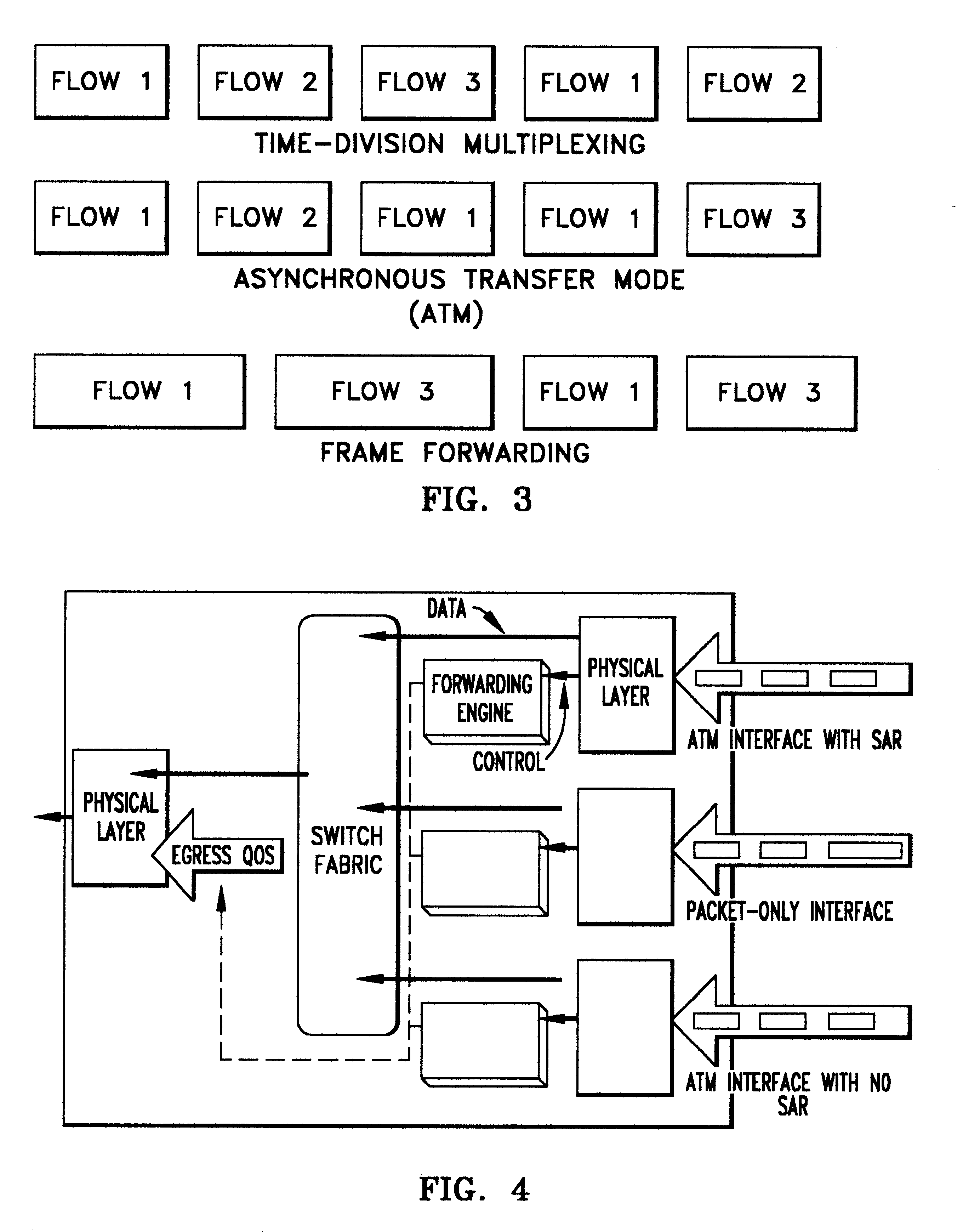System architecture for and method of processing packets and/or cells in a common switch
a system architecture and cell technology, applied in the field of system architecture for and method of processing packets and/or cells in a common switch, can solve the problems of no per datagram delay variation or latency guarantee, no datagram will not be dropped in a router-based network, and poor delay for cbr-type circuits, so as to achieve the effect of not affecting the performance aspects of cell forwarding characteristics
- Summary
- Abstract
- Description
- Claims
- Application Information
AI Technical Summary
Benefits of technology
Problems solved by technology
Method used
Image
Examples
Embodiment Construction
(s) of the Invention
The present invention, exemplarily illustrated in FIGS. 4 and 14, and unlike all these prior systems, optimizes the networking system for transmitting both cells and frames without internally converting one into the other. Furthermore, it maintains the strict QoS parameters expected in ATM switches, such as strict CDV, latency and cell loss. This is achieved by having a common ingress forwarding engine that is context independent, a switch fabric that transfers cells and frames with similar latency, and a common egress QoS engine--packets flowing through the architecture of the invention acquiring cell QoS characteristics while the cells still maintain their QoS characteristics.
The main components of the novel switch architecture of the invention, sometimes referred to herein by the acronym for the assignee herein, "NeoN," as shown in FIG. 14, comprise the ingress part, the switch fabric and the egress part. The ingress part is comprised of differing physical int...
PUM
 Login to View More
Login to View More Abstract
Description
Claims
Application Information
 Login to View More
Login to View More - R&D
- Intellectual Property
- Life Sciences
- Materials
- Tech Scout
- Unparalleled Data Quality
- Higher Quality Content
- 60% Fewer Hallucinations
Browse by: Latest US Patents, China's latest patents, Technical Efficacy Thesaurus, Application Domain, Technology Topic, Popular Technical Reports.
© 2025 PatSnap. All rights reserved.Legal|Privacy policy|Modern Slavery Act Transparency Statement|Sitemap|About US| Contact US: help@patsnap.com



